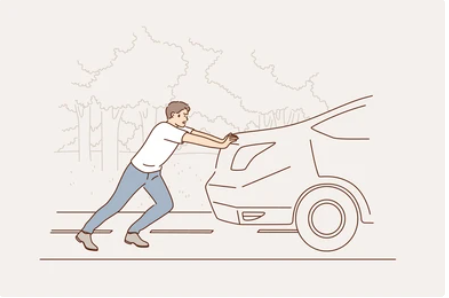Newton’s laws of motion are three laws that describe the relationship between an object and the forces acting on it.
These laws are:
An object remains in the same state of motion unless a force acts on it.
This means:- A stationary object remains stationary unless a force is applied to it
- A moving object continues moving at the same velocity (at the same speed and in the same direction.)
The force of an object is equal to the mass of the object multiplied by how much the object is accelerating
This is shown by the equation below: $$ \let\force=f \let\mass=m \let\acceleration=a \force = \mass\acceleration $$For example:
A car which weighs 1,000 kilograms, accelerating at 5 metres per second squared, have an overall force of 5,000 Newtons acting on it.
Whenever two objects interact, they exert equal forces on each other in opposite directions.
Example:

A man is pushing a car.
The car pushes the man back (so the man’s hands don’t go through the car.)